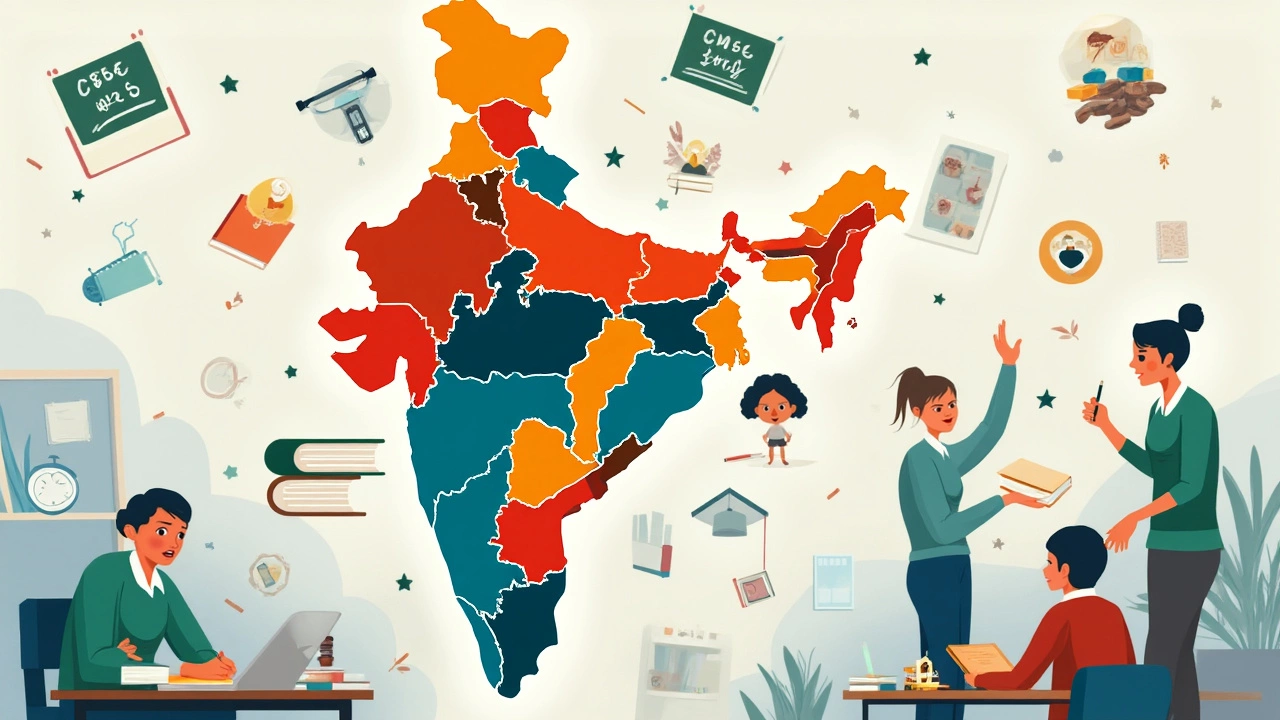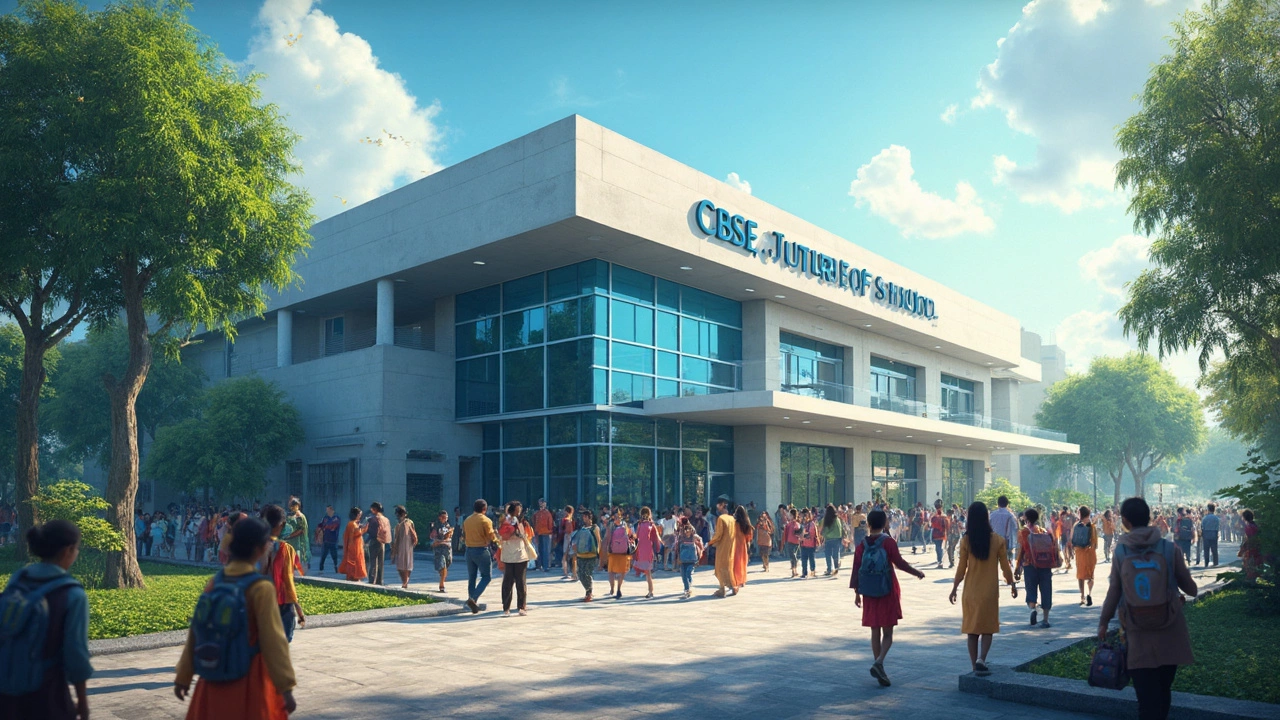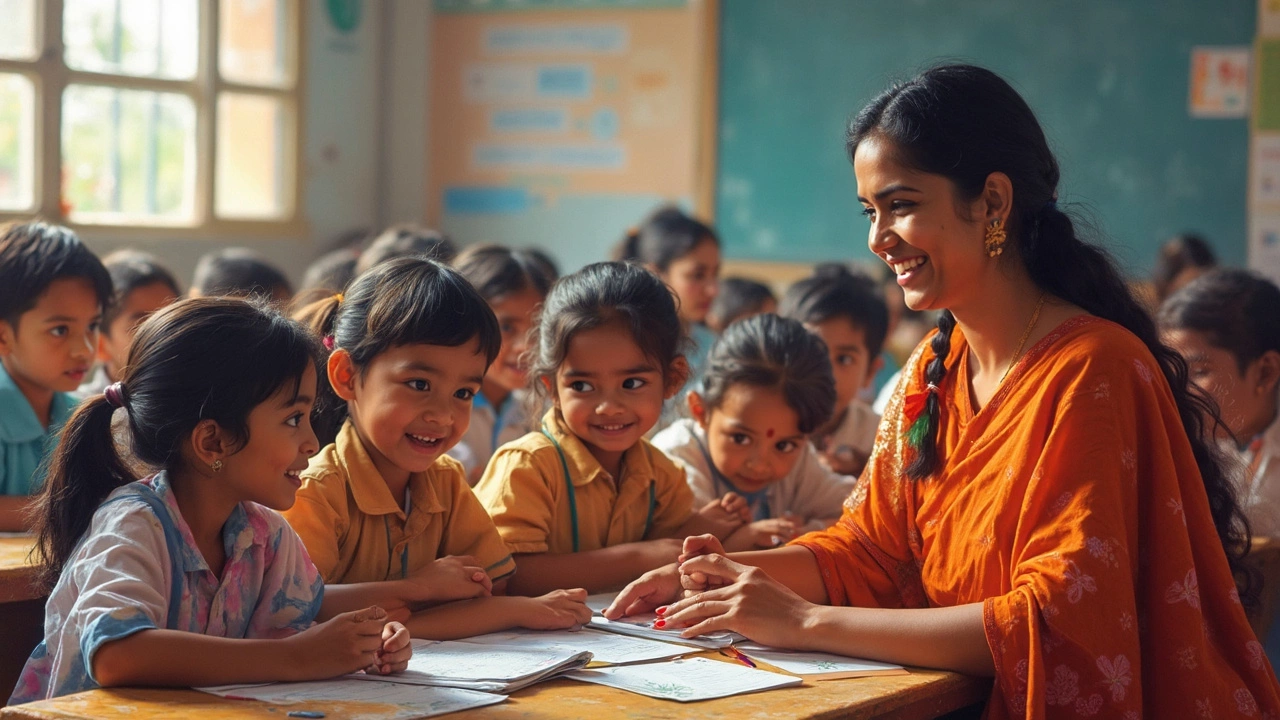If you've ever wondered which state in India has the most CBSE schools, you're in for an interesting exploration. Spoiler alert: it's not just about numbers—it's about a whole lot more. Let's talk favorites first—can you guess which state tops the list? Well, it's Uttar Pradesh. Yep, this northern state takes the crown with the highest number of CBSE schools.
Now, you might ask why Uttar Pradesh? It's not just a fluke. The state has a massive population, which naturally demands more educational institutions. Plus, the preference for CBSE syllabus in urban and even semi-urban areas can't be ignored. Parents often go for CBSE due to its structured syllabus and national recognition, making it an attractive option.
The growth of CBSE schools in Uttar Pradesh reflects broader trends. The state's educational infrastructure has been on the rise, and with the growing emphasis on quality education, especially in bigger cities, it's not surprising to see so many CBSE schools popping up. For families considering schools, it's crucial to weigh the choices carefully, focusing on individual school's reputation rather than just the board.
- The Leader of the Pack
- Why This State?
- CBSE Growth Trends
- Impact on Education
- Choosing the Right School
The Leader of the Pack
Alright, let's dive into why Uttar Pradesh is the reigning champ when it comes to having the highest number of CBSE schools in India. We're not talking just a few extra schools; Uttar Pradesh dwarfs others with its sheer numbers. Imagine this: a state that’s almost always hustling and bustling, with education at the core of its development strategies.
Now, if you're guessing this has something to do with population, you're spot on. With over 200 million residents, Uttar Pradesh is India's most populous state, naturally leading to a need for more schools. But there's more to it than just numbers. The state's urban areas, like Lucknow and Kanpur, are hubs for educational excellence, offering a ton of CBSE options for families seeking quality education.
Here's a little fun fact for you. According to data, Uttar Pradesh boasts over 4,000 CBSE-affiliated schools. Crazy, right? This staggering figure is a testament to the state's commitment to education and continuous growth in educational infrastructure. And despite the volume, many of these schools maintain high academic standards, often featuring well-rounded programs including extracurricular activities.
But the real magic behind these numbers comes from an ever-increasing demand for the CBSE syllabus. Parents lean towards CBSE for its structured curriculum that prepares students for nationwide entrance exams, positioning it as a go-to choice for higher education opportunities.
So, what's the takeaway here? For parents eyeing a switch to CBSE or for those just curious, Uttar Pradesh shines not only with its numbers but also with its dedication to making quality education accessible. And as more parents recognize the benefits, it's likely we'll see those numbers keep climbing.
Why This State?
Alright, so Uttar Pradesh isn't just randomly topping the chart when it comes to the number of CBSE schools. There are some solid reasons behind it. First off, think population. Uttar Pradesh is huge in terms of people, and with that comes the demand for a lot of schools. More kids mean more schools, right? Simple math.
But there's more to it than just the numbers game. Over the years, UP has been experiencing rapid urbanization, especially in cities like Lucknow, Kanpur, and Ghaziabad. With urban areas growing, there's a spike in demand for quality education, and that's where the CBSE board gains popularity. People often prefer it because it offers a consistent, recognized curriculum that's valuable across India and even abroad.
Another factor is the government's push towards improving the education sector. Various policies have been rolled out to enhance the educational infrastructure, and a good chunk of these support establishing CBSE schools. Efforts to ensure better teacher training and upgrade facilities also play into this. It's about creating an attractive setup that draws more schools into the fold.
If we glance at some numbers, there's a noticeable jump in the establishment of CBSE schools in the last decade. And while the quality varies from school to school, the board’s emphasis on holistic education makes it a go-to choice for many parents. They see it as a ticket to better opportunities for their kids.

CBSE Growth Trends
The CBSE (Central Board of Secondary Education) has been on a significant growth trajectory across India, and understanding these trends sheds light on the evolving educational landscape. This board, preferred due to its comprehensive and flexible curriculum, has a remarkable presence, especially in states like Uttar Pradesh, Maharashtra, and Tamil Nadu.
Over the past decade, the number of CBSE schools has surged. A closer look at the data shows a consistent rise in student enrollments, reflecting parents' confidence in the board's ability to prepare children for competitive exams and higher education. Here's a simple observation: more families are relocating for work across states, and they prefer a standardized education system like CBSE.
What’s driving this growth? There's a demand for quality education that aligns with modern pedagogical standards. The CBSE’s constant curriculum updates and focus on subjects that prepare students for future global challenges have made it the go-to choice.
Here's a snapshot of current trends:
- States with large urban populations see rapid growth in CBSE schools.
- CBSE's emphasis on skill-based learning has increased its appeal.
- Increased governmental and private sector investment in education infrastructure has boosted CBSE's reach.
The growth isn't uniform across all regions, though. While urban areas lead in numbers, many rural and semi-urban regions are catching up, thanks to initiatives aimed at improving educational access.
Let’s look at some numbers to illustrate the scenario. In a recent survey, it was found that about 19,500 schools across India are affiliated with CBSE. If growth continues, these numbers are poised to rise, further amplifying the board’s influence on India's future generations. The robust framework of policies and examinations has set a benchmark for quality and standardization.
Impact on Education
Having the highest number of CBSE schools in Uttar Pradesh doesn't just add up to a figure on paper—it's shaping the quality and accessibility of education in the state. For starters, the widespread presence of CBSE schools means that students from different backgrounds have better access to education that's aligned with national standards.
CBSE's emphasis on a comprehensive curriculum helps students grasp subjects like math and science through practical learning, which can lead to better performance in national-level exams. That's not just good for college admissions but also for molding a well-rounded individual.
But, there are some challenges to consider. With more schools popping up, maintaining consistent quality across these institutions becomes crucial. Parents need to look beyond the CBSE curriculum and ensure that the school's overall environment, facilities, and teaching methodology fit their child's needs.
| CBSE Schools in Key Indian States | Number of Schools |
|---|---|
| Uttar Pradesh | 5300+ |
| Maharashtra | 4000+ |
| Delhi | 1700+ |
This steady proliferation of CBSE schools in Uttar Pradesh has a broader impact, too. It sets a benchmark in India's educational landscape, showcasing how a state can cater to its growing need for quality education. With the right checks and balances, the impact on education can be profoundly positive, giving students a solid foundation to build their futures.

Choosing the Right School
Picking the right school for your child is no small feat. With a dizzying array of options, especially in a state brimming with CBSE schools like Uttar Pradesh, how do you narrow it down? It's all about figuring out what matters most for your kid's education and your family's values.
First and foremost, consider the school's reputation. It's not just about academic performance. Look for schools that champion student well-being and have a knack for developing life skills. A wise man once noted that "the best way to predict the future is to create it." In the context of your child's future, seek out schools that encourage creativity and critical thinking—these are the real game-changers.
The best way to predict your future is to create it. - Peter Drucker
Ongoing communication with teachers and school leaders is vital. Schools that foster an open dialogue with parents generally have healthier environments. Transparency in policies and practices adds a layer of trust that, as you can imagine, eases plenty of parental concerns.
- Campus Feel: A visit to the campus can tell you a lot. Scan for safety measures, hygiene standards, and facilities. Are the labs up to scratch? Is there a sports ground? These small things add up to a comprehensive learning environment.
- Curriculum Depth: Does the school go beyond the basic CBSE syllabus? Are there extracurriculars that suit your kid's interests, whether it's drama, sports, or coding?
- Peer Reviews: Check online reviews or talk to parents who have their kiddos enrolled. Firsthand experience can often reveal insights that a prospectus won't.
Sometimes looking at data can help too. A school with a lower student-to-teacher ratio suggests that each student gets more individualized attention—a big-plus. Let's say School A has a ratio of 15:1, while School B is at 30:1. Most would lean toward School A.
Just a heads-up, though—don't rely solely on league tables or rankings. They can provide a snapshot, but they don't always capture the full picture of what will best suit your child's needs. Remember, the goal is to ensure your child feels happy and motivated to learn; a good fit can make all the difference.

